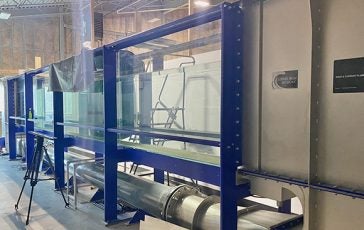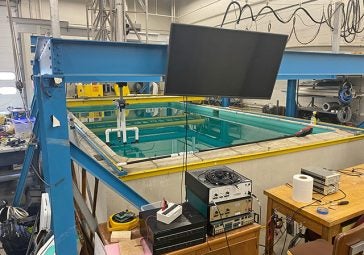By Neil Nachbar

The University of Rhode Island has one of the best ocean engineering programs in the country, according to College Factual.
With the engineering program’s recent acceptance into the U.S. Department of Energy’s Testing Expertise and Access for Marine Energy Research program, known as TEAMER, companies can take advantage of URI’s research facilities and expertise without being charged a fee.
Technology developers may use URI’s wave-current flume, wave tank and acoustic tank to conduct tests. TEAMER will reimburse URI for research that costs up to $150,000 per project, with projects scheduled for a nine-month period.

The Department of Energy’s TEAMER program is focused on marine energy, which is a renewable power that is harnessed from the natural movement of water, such as ocean waves, tides, rivers and ocean currents.
“Companies can test a device at URI that is designed to extract these types of energy,” said URI Associate Professor Reza Hashemi. “For instance, a company can build a scaled model of a tidal energy device in URI’s wave-current flume to study how much energy can be extracted or how wave loads affect the performance of the device.”
The benefit to URI extends beyond the financial arrangement.
“There is great potential to employ graduate students, along with the technicians at URI, to operate and perform the required experiments and analyze the data,” said Hashemi. “This will provide a great opportunity for students to work directly on research and development with marine renewable energy companies.”
Before applying for support through TEAMER, companies must discuss their proposals with URI to ensure that the ocean engineering program has the capability to provide the necessary lab requirements and expertise.
After contacting Hashemi at reza_hashemi@uri.edu or 401.874.6217 to discuss the research proposal, companies may submit an application online.
